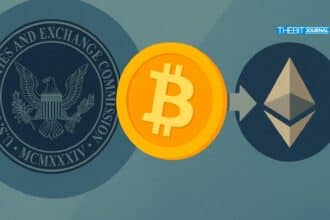More than $88 million is currently held in the top 100 Bitcoin wallets, which contain “minuscule amounts” of BTC. These Bitcoin wallets, often called “dusty addresses,” have allegedly accumulated over 530 BTC since January 2023. Despite their small individual holdings, collectively, they account for approximately 1,380 BTC, showcasing their significant aggregation over time. According to BitInfoCharts, these addresses have processed transactions totalling more than $139 million since January 2010, displaying their active role in the Bitcoin (BTC) ecosystem. This data highlights the diverse activities within these wallets, ranging from routine transactions to potentially strategic movements within the cryptocurrency market.

Notably, many of the smallest addresses are relatively recent, with nine of the top 10 receiving their first transaction after March 2023. The youngest among the top 100 is just five months old.
Notable Holders of Bitcoin Wallets
The leading wallet in this group is reportedly controlled by Huobi, holding 12.46 BTC valued at approximately $792,000. This address has facilitated more than 1.59 million transactions, accounting for 0.77% of all Bitcoin transactions. Seventy-eight addresses belong to F2Pool, a prominent Bitcoin mining pool, with the largest holding of 2.47 BTC worth about $172,737. The remaining addresses are associated with a blend of retail and institutional investors, making it challenging to distinguish between the two.
According to BitInfoCharts, 82 of the top 100 addresses have not seen any inbound or outbound transactions in 2024. This observation suggests a phenomenon where a significant portion of these Bitcoin holdings remain dormant or inactive throughout the year. Such dormancy could indicate various reasons, including long-term investment strategies, storage in cold wallets for security purposes, or simply minimal transactional activity from these particular addresses.
This pattern of inactivity contrasts sharply with the remaining 18 addresses, which continue to see regular transactional activity. The dichotomy between active and dormant addresses reflects the nuanced dynamics within the cryptocurrency ecosystem, where some holders prioritize long-term holding strategies while others engage more actively in trading and transactions.
Understanding the distribution of activity among these addresses provides valuable insights into the broader behaviour of Bitcoin holders. It can be extended to other coin holders as well, like Ethereum (ETH).
Growth of Bitcoin Wallets
The number of Bitcoin wallets continues to expand, experiencing up to a 5.5% increase since the beginning of this year. Glassnode data indicates approximately 1.3 million Bitcoin wallets as of July 14, with around 44 million holding non-zero balances.
Non-zero addresses denote wallets with a positive balance, underscoring active engagement with the Bitcoin blockchain. This metric has shown steady growth over the past year, reflecting increasing confidence in the network. The rise in non-zero addresses indicates a growing number of participants actively holding and transacting Bitcoin, contributing to its liquidity and market activity.

This trend of increasing non-zero addresses signifies expanding Bitcoin’s adoption and use cases beyond speculative trading. News sources hint that more individuals and institutions are integrating Bitcoin into their financial strategies, whether as a store of value, a medium of exchange, or part of wider investment portfolios.
Future Outlook
The steady increase in active Bitcoin wallets suggests a positive trajectory for Bitcoin’s adoption and utilization in various sectors. This trend indicates the growing acceptance of Bitcoin as a legitimate financial asset and payment method globally. As more wallets become active, Bitcoin’s network effect and infrastructure will strengthen, potentially leading to enhanced liquidity and stability in the cryptocurrency markets. This ongoing growth also encourages further innovation in blockchain technology and financial applications, positioning Bitcoin as a pivotal player in the digital economy for years to come.




























